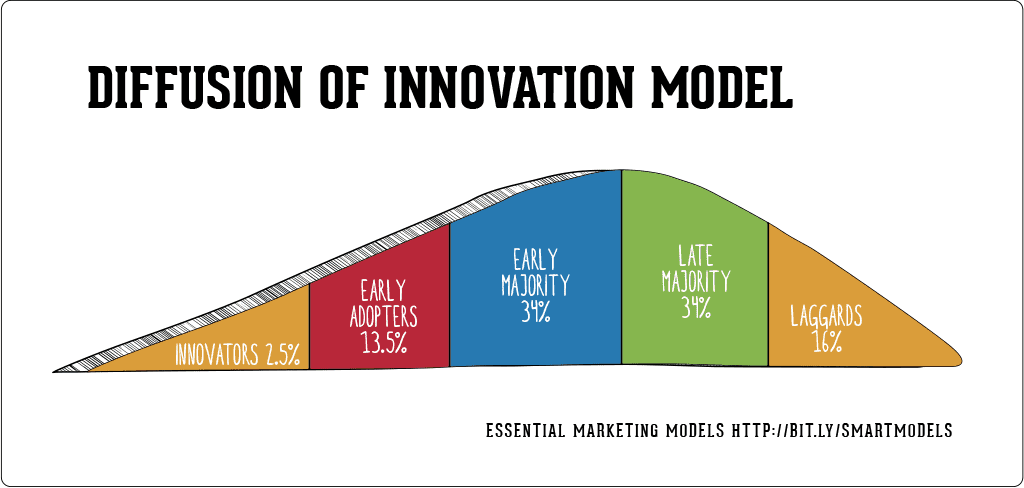
The Diffusion of Innovation is a theory that seeks to explain how, why and what rate new ideas and technology spread. Popularized by American communication theorist and sociologist, Everett Rogers, This theory helps us understand the rate at which new ideas and technologies spread. As seen in the model above, this is normally how it is understood and taught by Rogers, and is commonly used by marketers to understand where consumers are and when these consumers will adopt a new product or service.
In a time where smartphones exist, it's hard to imagine life without them, but there was a period of time when these pieces of technology were not the norm. The tale of how smartphones became nearly universal is a great example of the Diffusion of Innovation theory in action. Breaking the theory down a bit more, it classifies adopters into five distinct categories (as seen above in the model): Innovators, Early Adopters, Early Majority, Late majority and Laggards.
-min.jpg?width=1200&height=800&name=TXT-688-blog%201-1%20(1)-min.jpg)
When the first iPhone was released in 2007, it was extremely revolutionary, but its downsides were its high cost and limited functionally compared to phones now. The Innovators were the first who saw the potential of the product and were willing to pay the price for being the first enthusiasts. The Early Adopters (trendsetters, influencers, and businesspeople) were the ones to recognize the technology not just for the functionally, but the social value it implemented. These people were the ones who turned the smartphone into a symbol of status, connectedness and productivity. The Early Majority adopters are the ones that jumped in when the smartphone became more "popular" (when the price came down, more apps were available, and the infrastructure made it more useful.) By the time the Late Majority had entered into the world of this technology, smartphones weren't as optional as they were before. They were a necessity to everyday life and were the norm at the time. The Laggards were the ones who resisted the change to the point where it was almost unavoidable. Think of the Boomer generation where they tried to hold onto their flip phones for as much as possible.
We have come to see that what makes a new technology popular isn't how new it is or how cool it is, but by the people who see potential and use those ideas to make it easy to use, have visible benefits and how compatible that technology may be with existing human habits. That's what the diffusion theory helps people understand, and starting smartphones are no different.
No comments:
Post a Comment